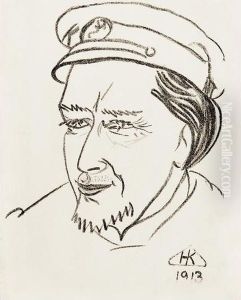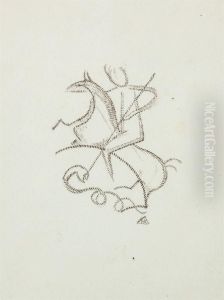Nicolai Kulbin Paintings
Nicolai Ivanovich Kulbin was a Russian avant-garde artist, painter, and theorist who played a significant role in the development of abstract art in Russia. He was born on September 5, 1868, in Saint Petersburg, Russia. Kulbin's early life and education are not extensively documented, but he is known to have started his artistic journey as a self-taught artist before seeking formal training.
During his career, Kulbin was heavily influenced by a variety of artistic movements and theories, including Symbolism and Neo-Impressionism. He was particularly interested in the psychological effects of color and form, which led him to experiment with non-representational art and the expressive possibilities of abstraction. Kulbin's work often explored the relationship between music and painting, and he believed in the concept of 'painting as music,' which was a radical idea at the time and contributed to the foundation of abstract art.
In 1907, Kulbin founded the Union of Impressionists, which was an important group dedicated to exploring new artistic ideas and promoting avant-garde art in Russia. He was also associated with the group 'Triangle,' which included other prominent avant-garde artists. Kulbin's involvement with these groups positioned him at the center of the Russian avant-garde movement, where he interacted with influential artists and thinkers, such as Mikhail Matyushin, Kazimir Malevich, and Wassily Kandinsky.
Kulbin's theoretical writings and art criticism were also a significant part of his contribution to the art world. He wrote on topics such as the fourth dimension in art and the synesthetic connections between colors and sounds. These ideas were important for the development of abstract art not only in Russia but also internationally.
Tragically, Nicolai Kulbin's life and career were cut short by his untimely death on December 21, 1917, in Petrograd (formerly Saint Petersburg), Russia. Despite his relatively short career, Kulbin's artistic legacy endured, influencing future generations of abstract artists in Russia and beyond. Today, his works are recognized for their pioneering role in the early abstract movement and are studied for their innovative approach to form, color, and artistic expression.

